
|   |

|   |
The 28th Konark Dance and Music Festival Text & pics: Lalitha Venkat e-mail: lalvenkat@yahoo.com February 27, 2013 Walking out of Bhubaneswar airport, I looked across and there it was, the huge billboard advertising the 28th Konark Dance and Music Festival from Feb 19 - 23 organized by Late Guru Gangadhar Pradhan’s Konark Natya Mandap. Cultural events here are advertised grandly on a scale one never sees in Chennai, with huge billboards dotted across the city and festooned venues glittering with myriad tiny lights. The one hour drive to Konark was quite relaxing as the people were getting ready for an opposition sponsored bandh for the next two days. As we passed by Konark Natya Mandap on the way to the sprawling Yatri Nivas, we saw a new additional decoration this year in the form of 4 massive elephants, 2 guarding the entrance. The festival was inaugurated by Suresh Goel (Director General, ICCR) along with Swami Shankarananda Giri (President, Konark Natya Mandap) and Ashok Kumar Tripathy (Principal Secretary, Tourism, Govt of Odisha) to the beating of drums, gongs and cymbals by eight gotipua dancers. The festival got off to a nice start with the traditional Panchadeva Stuti by the young dancers of Konark Natya Mandap, who were not very coordinated but still made for an impressive spectacle with the dancers atop the superstructure holding lamps and freezing into poses. This is a daily feature of the 5 day fest and the dancers got more comfortable over the days. The main program of the rather chill evening commenced with ‘Nrityopahara’ by Dr. Ananda Shankar Jayant and the Shankarananda Kalakshetra ensemble from Hyderabad. In the city of the Sun god, the pleasant Bharatanatyam recital commenced aptly with ‘Surya namaskar,’ an ode to the Sun. Interesting line formations depicted the movement of the Sun God (played by Jinakaraja) across the sky in his chariot drawn by seven horses and the spacious open stage with the backdrop imitating the Sun Temple pagoda was a good setting. Vasanta (spring season) was performed to a poem by Devullapalli Krishna Shastry from Andhra Pradesh. The wonders of the Indian spring was celebrated with blossoming flowers, gurgling rivers, verdant forests, charming waterfalls, the prancing deer, and the dancing peacock. The next item was a touching Meera bhajan solo by Ananda Shankar Jayant in Misra Malkauns and adi talam. In this item, Meera says, “Who else will look after me, but you, O Krishna? You, who saved Draupadi’s honour in the Kaurava court, O Giridhari, please protect me.” The stage being quite huge is more suited to a group recital as a solo dancer’s abhinaya can be seen only by those in the first few rows. The Thillana in Natabhairavi had all dancers back on stage in a spirited performance, a poetic and musical offering composed by Veena Krishnamachariar in praise of Rukmini Devi who established Kalakshetra. The final item ‘Shivoham’ was in praise of Nataraja, the God of dance. Lord Shiva and his consort Shakti are together Ardhanarishwara, representing the synthesis of the masculine and feminine energies of the universe. This item was beautifully performed by Jinakaraja and Sneha Magapu with good coordination and energy. The mango yellow costume of the ensemble was bright and cheerful. The other dancers of the evening were Krithika Varsha, Nilosri Bhattacharya, Aditi Rao, Aditi Nigam and Srinidhi. The excellent musical support was by IV Renukaprasad (nattuvangam), S Venumadhav (vocal), TP Balasubramanyam (mridangam) and K Saikumar (violin). Lights were by Surabhi Purna Chandrashekar. 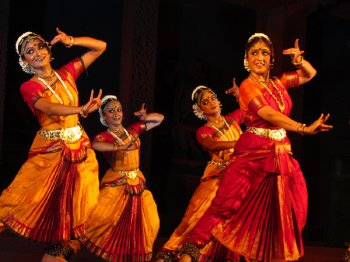 Ananda Shankar Jayant and grp 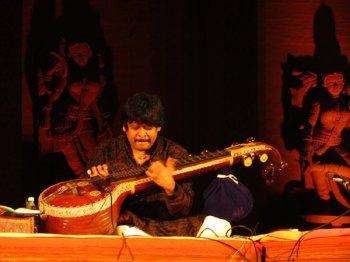 Rajesh Vaidya The music concert was delayed by about 45 minutes due to sound balancing problems that seems to be a recurrent feature in events that feature music and dance in one evening. One could say it was worth the wait as Rajesh Vaidya and his group from Chennai presented a scintillating recital that wowed the audience. The items presented were in raag Karnaranjini in 8 beats, raag Durga in five and a half beats, raag Kalyani, raag Sudhadanyasi set to eka talam and the grand finale in Sindhubairavi. Vaidya even displayed his virtuosity by resting his right hand on his chin and playing a sequence on his Saraswati veena with only his left hand! The other musicians were Mohan Raman and Sri Ganesh on mridangam, Chandrajit on tabla, Subramaniam on special effects and Varijasri on vocal and flute. For the most part, we could barely hear the flute. The percussion sections were greatly appreciated by the audience. The evening of Feb 20 started with an Odissi dance drama ‘Shakuntala’ by dancers of Konark Natya Mandap choreographed by Guru Lingaraj Swain. Starting with the melodious strains of the flute, the retelling of the story from Kalidasa’s Abhigyana Shakuntalam commenced with King Dushyanta chasing a deer for hunt. He is prevented by maidens as the deer belongs to sage Kanva’s ashram. There he meets Kanva’s beautiful adopted daughter Shakuntala, they fall in love and marry according to Gandharva rites. As Kanva is away, Dushyanta gives Shakuntala a signet ring as evidence of their marriage and returns to his kingdom. It was a short and sweet recital and the dancers performed well as a group, looking attractive in their turquoise blue costumes with the main characters in rust brown but it was strange to see Dushyanta sporting a peacock feather on his head. Script, concept and manjira accompaniment was by Prof Nabakishore Mishra, music by Sukant Kumar Kundu and rhythm was composed by Guru Dhaneswar Swain. The rest of the orchestra had Himanshu Sekhar Swain and Sursarita Rout on vocals, Budhanath Swain on mardala, Nirmal Naik on violin and Parasuram Das on flute. The dancers were Bishnu Charan Sasmal, Kamal Lochan Mohanta, Prasanta Kumar Sahoo, Nirmal Kumar Swain, Raghunath Pradhan, Rasmirekha Mohanta, Bijayini Madhusmita, Snigdha Madhusmitha Mohanty, Minakshi Rani Jena, Jyotirmajee Bhuyan, Mita Pradhan and Chloe Romero. 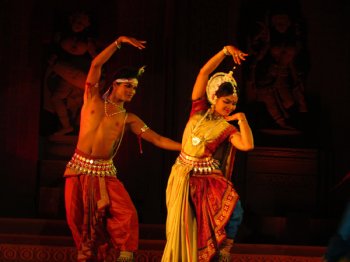 Dushyant & Shakuntala 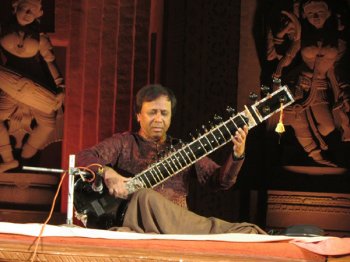 Ustad Shahid Pervez Khan With a minimum of fuss, the tuning was done for the sitar recital of Ustad Shahid Pervez Khan, a seventh generation heir to the sitar’s first family, the Etawah Gharana, with Pt Vijay Ghate on the tabla. It was a tranquil recital, meditative and soothing with no super fast theatrics, every tiny note standing out however low the volume. The artistes obviously enjoyed playing together and the good feeling permeated the audience as well. There was no announcement as to what raga or any other details, and one just had to soak in the wonderful music. 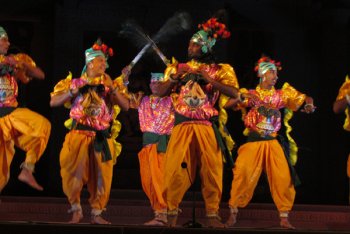 After the soothing music, the evening ended with the boisterous dancing of Ghumura nacha combining elements of tribal and folk forms by group Prativa from Bhawanipatna in Kalahandi district of Odisha. The colorfully clad group consisted of a vocalist, 2 main drummers and all the performers had a kind of small pot shaped tiny drum suspended from their necks on which they played while dancing. One performer held a bunch of peacock feathers in each hand that he waved as he crossed from one end of the stage to the other throughout the recital. Having its roots in a martial tradition, it is believed that this could have been a wartime dance. The item was signified with high energy dancing, singing and sound of percussion. The compering of the evening was the fourth act with the male star compere in Odiya spouting reams of slokas and poems. Compering seems to be serious business in Odisha with many of them commanding a high fee. If only they realize that less can be said to convey the message and cut out the needless talk and endless adjectives. Jai Jagannath! How much simpler an evening of performing arts entertainment would be! Despite the bandh, there was fortunately a good turnout for the evening. The evening of Feb 21 was inaugurated by the distinguished Raja of Puri. After the Panchadeva stuti, the dance program featured a charming Kathak recital by Malti Shyam and her group. Titled ‘Samanvay,’ the elegant recital was composed of five items rendered delightfully to beautiful recorded music. In the invocation to Lord Shiva, drupad “Shankar Pralayankar” in raag Shankara saw the five dancers presenting a rather meditative piece with restrained footwork imaginatively choreographed. Next was a khayal “kaiso niko laaga” in raag Malkhauns on the unusual theme of a groom dressing for his wedding. The thumri “Aaj mori kalai murak gai” in raag Khamaj was a charming solo by Malti in which she pleads with Krishna asking him to let go of her wrist while engaging him playfully. The dadra “tumhare kaaran jaagi eri, aanbaan jiya me laagi” in raag Gara was performed by three dancers. The vivacious taraana in raag Malkauns featured the vibrant movements, footwork and subtle flow of chakkars characteristic of the Lucknow gharana of Kathak bringing Samanvay to a joyous end. Dance concept and choreography was by Malti Shyam. Her love for Hindustani music was evident in her arrangement of the order of compositions tracing the evolution of Hindustani music. Her well trained ensemble included Shilpa Verma, Sarita Dutt, Sukriti Sharma and Yamika Mahesh. The dancers made good use of the space and the day’s addition of a linoleum flooring over the hard cement floor of the stage definitely made all the difference to the presentation. 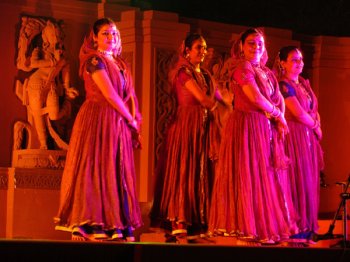 Malti Shyam and group 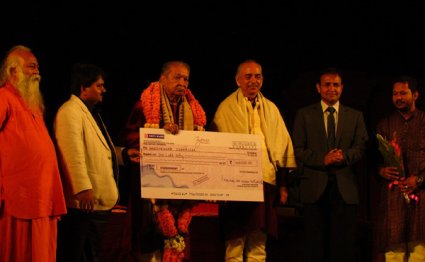 Pt Hariprasad Chaurasia It was then time for the most important part of the festival. The third Guru Gangadhar Pradhan Lifetime Achievement Award with a purse of Rs 1 lakh (courtesy MGM Group Odisha) was conferred on flute maestro Pt Hariprasad Chaurasia for his outstanding contribution to Indian classical arts, by the Raja of Puri and Swami Shankarananda Giri. Earlier recipients were Pt Amjad Ali Khan and Ustad Zakir Hussain. “I am rather emotional that Shibu (Sibashis Pradhan) is carrying on the tradition of his father. This wonderful festival featuring dance and music together is well known internationally and I wish that the festival continues to be an annual feature and receives good support. I am actually very nervous after receiving this award,” said Pt Chaurasia and went on to present an outstanding concert accompanied by scintillating tabla by Pt Vijay Ghate. The rapport between the artistes was such that it was a pleasure to watch them as well as hear every nuance of Panditji’s flute with Ghate’s tabla in superb agreement. As one rasika described, “the flute spoke and the tabla was music to the ears.” Raag Marobehag was followed by raag Keeravani which featured a scintillating tabla-flute interaction. Pt Chaurasia then asked the audience if they had time for one more short item and which raga would they like (what humility from such a great maestro). With a resounding yes and a varied choice of raga request, Panditji settled for a lilting Pahadi and the standing ovation was a natural end to the magical evening. His talented disciples Abhiram Nanda and Chandra Chaitanya accompanied their guru. It was indeed heartening that despite the continued bandh for the second day, the rasikas had come in full strength to grace the occasion. And so immersed was everyone in the riveting music that one hardly noticed the chill in the air. The ‘Cosmic dance of Shiva’ was a “creative dance theatre” presented to recorded music by Thiruvananthapuram based Samudra on fourth evening. A series of vignettes describing various aspects of Shiva were woven together. Starting on a meditative mood with a chant, the creation of Swayambu (self created Shiva linga) is described. From this emerges a serene form of Shiva and in the mystic lighting, the dancers interspersed kalari movements and statuesque dance postures showing superb balance and body control. Shiva in a romantic mood was explored “through lasya that is masculine and firm in its grace.” The Ardhanarishwara section shows Shakti as contained within Shiva. The tandava piece explores various bhavas, concluding with a vigorous dance where Shiva is represented as the destroyer and ultimate crucible of cosmic energy. Some wonderful percussion sections with complementing movements were well choreographed with the overall impression of fit physiques and mastery over kalari movements like leaps and splits, gliding on the floor and so on. The lighting was in general subdued and artistic, prompting a rasika to comment that more light could have shown the abhinaya part better. He was told that for Samudra, it was their superbly controlled bodies that emoted! While the first half of the presentation was gripping in its intensity, they could evolve the second half of the production to match it. Madhu Gopinath and Vakkom Sajeev, the artistic directors of Samudra, call their dance form “Samudra Natanam, an encounter between body and soul, dance and music, tradition and modernity.” They believe that muscles and movements as much as the face and hand gestures can convey bhava and rasa. This charming group is all set to tour North America shortly. The other dancers were Madhu Chandran, Lathin Raj, Aneesh Soman, Deepu Bhasi, Deepa MS, Lithi Raj and Sathya Chitra. Music was by Ramesh Narayan and light design by Jose Koshy. 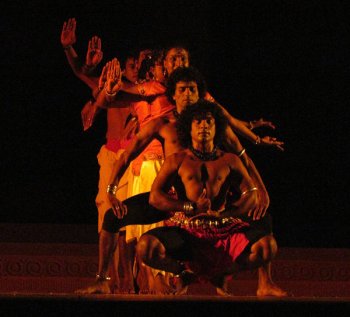 Samudra 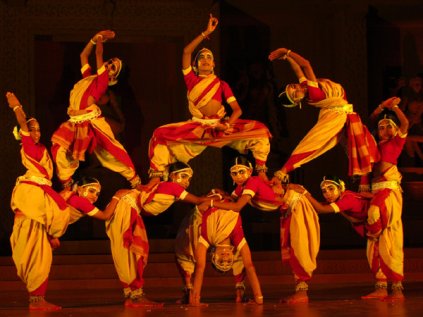 Gotipua troupe of Konark Natya Mandap The talented gotipua troupe of Konark Natya Mandap wowed the audience as usual with their agility, charm and energy. They performed a pallavi in raag Mukhari, an abhinaya “dekhago radha madhabo chali” and concluded with bandha nritya. Their individual acrobatics and pyramid formations had a battery of photographers trying to capture the poses and a lustily cheering audience. This is an award winning group and has a very busy schedule. Hopefully, it will not tire out the little guys. Choreography and direction was by Guru Birabar Sahoo and late Gangadhar Pradhan, mardala by Alok Ranjan Das, violin by Rashmi Ranjan Nayak, manjira by Surendra Pradhan, vocal by Jaya Krushna Nayak, Dilip Kumar Maharana and Tapas Kumar Nayak. 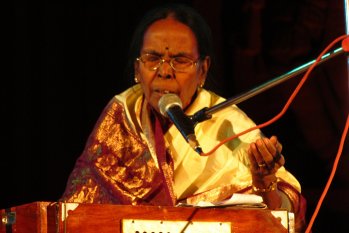 Shyamamani Devi
The concluding program for the evening was an Odissi vocal recital by eminent vocalist Shyamamani Devi with Sudarsan Das on flute and Janardan Das on mardala. One did not need to understand Odiya to appreciate the beauty of the songs she rendered in her powerful voice. Unfortunately, many left after the gotipua recital. Perhaps the programming could have been done differently to ensure good audience throughout. The final evening of the fest had an almost full moon above and lots of expectancy in the air. The Sanjukta Birla Prativa Samman (courtesy Studio Voice Master) was awarded jointly to Bharatanatyam Guru VS Ramamurthy (who was unable to travel) and his daughter Manjula Ramamurthy. The evening commenced with Deepa Tarangini, a performance to recorded music by Sri Rama Nataka Niketan from Hyderabad. ‘Shadaksharam’ composed by Madurai Muralidharan in raag Shanmukhapriya was a solo by a young dancer with live nattuvangam by Guru Manjula Ramamurthy. This was followed by Krishnanjali, a composition of Narayana Teertha on how the universe came into being, performed by 17 young dancers, some on inverted clay pots and the youngsters in the front on brass plates like in Kuchipudi with the plate representing water and the pots representing the cosmos. The dancers balanced a small three tiered pot on their heads topped by a lit candle as well as candles in both palms as they froze gracefully into statuesque poses, some acrobatic, exhibiting good body control and balance much to the delight of the audience. This item is said to be a revival by Guru VS Ramamurthy and Manjula of the dance performed by E Krishna Iyer in the 1920s and definitely looked spectacular with beautifully clad dancers holding the flaming candles and moving in coordination. After the show we did ask the dancers about the hot melting wax dripping on their hands and the girls seemed uncomfortable saying it did hurt but they are used to it. The final item was a thillana in Kadanakuthuhalam. The audience loved the spectacle but this group performed just last Feb at this same festival, hence one did wonder why they were repeated so soon this year. 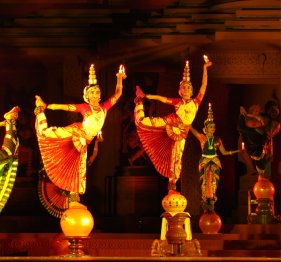 Deepa Tarangini 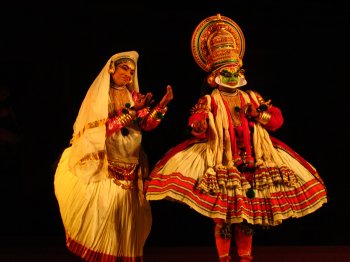 Kalamandalam Arvind and Kalamandalam Shivdas Under the artistic direction of Kalamandalam Gopalakrishnan, Kathakali School from Thrissur presented Mohiniattam and Kathakali. The solo item ‘Taruni’ was presented by Soorya followed by ‘Kerala Ganam’ of P Kunhiraman Nair by Soorya, Sumesha and Anushree. The Kathakali performance ‘Karna Sapatham’ based on Karna and Kunti’s dialogue from the Mahabaratha was dramatic and touching. Kunti meets Karna imploring him to spare the Pandavas. “The Pandavas and Draupadi only have contempt for me, so why do you request me to show them mercy?” “They are not your relatives, so let go of Duryodhana.” “How dare you speak to me against Duryodana? I am what I am today because of him.” The dialogue goes on till Kunti reveals that she is his true mother and the Pandavas are his brothers. Kalamandalam Shivdas gave a brilliant portrayal as Karna, his every gesture and body language eloquent. He was ably supported by Kalamandalam Arvind as Kunti in this gripping, emotional drama. A short synopsis of the presentation would have helped the audience, many of them foreigners, and the announcement that Kunti’s role was enacted by a male in order to appreciate the portrayal that much more. Live accompaniment would have enhanced the presentation. 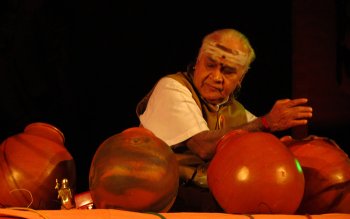 Pt Vikku Vinayakram
The festival concluded in a spiritual mood with the grand finale being a ghatam recital by Pt Vikku Vinayakram and his ensemble composed of talented family members – with son Mahesh on vocal, nephew N Ramakrishnan on mridangam and grandson Swaminathan on kanjira. ‘Thotakaashtaka’ in 8 beat cycle was followed by a chant dedicated to Lord of Chidambaram in a split 7 and 5 beat cycle. The limits of the tala system was explored in a 7 ½ beat cycle after which Panditji presented his specially composed piece for this festival, ‘Aditya Hrudayam’ in praise of Surya, dedicating it to Konark and Odisha. Taala Natanam was followed by a composition exploring the 9 ½ beat cycle and then a special chant on Ganesha. As an apt conclusion to the festival, Pt Vikku Vinayakram presented his composition of ‘Vande Mataram.’ The audience was in raptures as Panditji’s fingers flew over the pots in front of him, each delivering a varied tone. The percussion solos drew huge applause and Mahesh’s soulful singing added to the spiritual aura, bringing the star studded festival to a close with a standing ovation. A photo exhibition by young budding photographers of Cliquers and a handicraft exhibition was a part of the fest. With a glittering line up of world famous artistes, something needs to be done about the verbal overdose by comperes, who get their facts wrong as well as mispronounce many a time. Swami Shankarananda Giri supported the fest with his gracious presence throughout. Special mention must be made of the contribution of doctor-dancer Aparna Banerjee of Antara Arts from Bangalore and sitarist Sabyasachi Rout (Milu) from Bhubaneswar who assisted Shibu along with a host of people associated with Konark Natya Mandap. While the government run Konark festival in December concentrates on dance, Guru Gangadhar Pradhan’s Konark festival in February was started earlier and features music as well as dance. It is not easy to organize a festival of this magnitude in a small town a little more than an hour away from Bhubaneswar. Sibashis Pradhan and his team are to be congratulated for tackling challenges and successfully conducting the third edition of the festival after his illustrious father’s demise and one wishes him all the best for the years to come to continue this tradition. 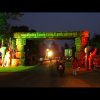
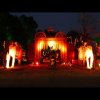
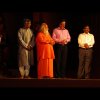
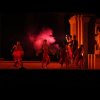


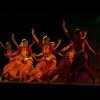
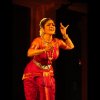
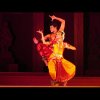
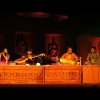
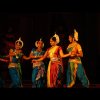
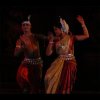
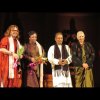
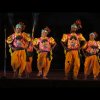
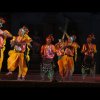
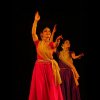
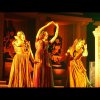

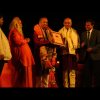
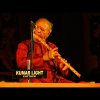
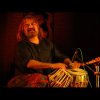
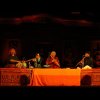
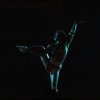

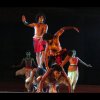
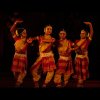
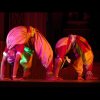
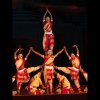
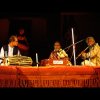
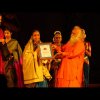
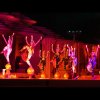
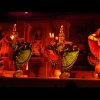
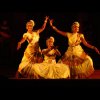
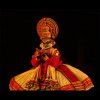
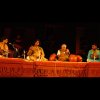
View slide show Lalitha Venkat is the content editor of www.narthaki.com |